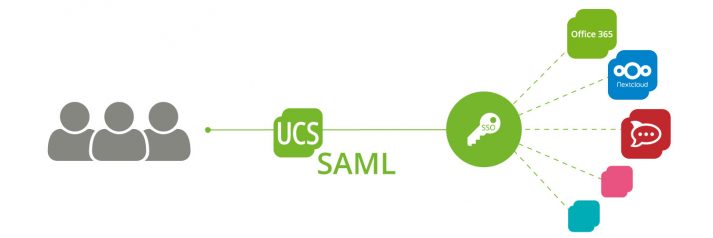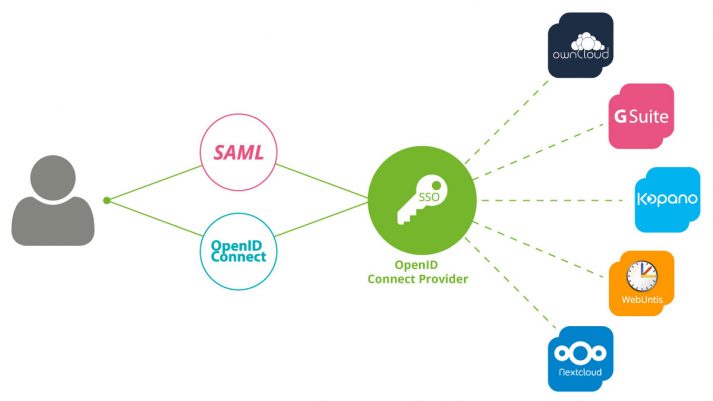ONLYOFFICE Docs: brand new name and big updates for spreadsheets
ONLYOFFICE is a collaborative office suite for working with text documents, spreadsheets and presentations in UCS. It is combined with Nextcloud, ownCloud, or Seafile and installed from Univention App Center casually (Docker-based) or as a pre-configured virtual appliance. You can also integrate it in UCS LDAP to manage all users.
In this article I’d like to tell you about the latest major update that brings a new name for ONLYOFFICE online editors as well as long-awaited features for spreadsheets.
OpenProject 11.0: New features of the Community- and Enterprise version
Version 11.0 of the open source project management software OpenProject includes many new features that improve both classic and agile project management.
Cloud Office: Open Source is the better solution
These days, a modern workflow includes fast coordination processes in teams that should also function independently of time and location. For this type of collaboration, it is essential that all team members can edit documents together without conflicts due to different file versions or endless and tiring comment loops. In this article I’d like to show you two examples which represent open source alternatives to cloud office solutions from known software giants.
ONLYOFFICE Integration Edition: a bigger scale of collaboration
ONLYOFFICE Integration Edition has just entered Univention App Store as a fully independent application. Read this article to learn more about how ONLYOFFICE can support your team in its growth and what opportunities it can provide in collaborative environment of a mature business.
Let’s take the Corona crisis as an opportunity
The Corona crisis has had a huge impact on our society. Office workers had to start working remotely, medical professionals had countless double shifts and delivery companies went into over drive. Winners and losers everywhere – Amazon grew turnover by 25% in the second quarter of 2020, the cloud computing department of Microsoft saw a 47% growth, we all know Zoom barely held it together, spending hundreds of millions on expanding their server farms.
EGroupware 20.1: further upgrades for home office-based users
EGroupware is a team management solution which specialises in team communication. The software is not only open source-based, but can be easily integrated into existing IT infrastructures. EGroupware can be installed via the Univention App Center.
The great advantage of Univention Corporate Server lies in the integrated identity and infrastructure management system. This facilitates the administration of applications, users and resources. Userscan, for example, simply install a mail server or other additional components that connect seamlessly with EGroupware.
Due to the ongoing corona crisis and the resulting increased demand for home office support, EGroupware has brought forward features originally planned for version 20.1 and released it already in April 2020.
Secure Communication Processes in UCS with (Self-generated and Signed) Certificates
Certificates – Why and What for
In this article I would like to give you an insight into the topic “Securing the Internet-based exchange of information through certificates”. I’ll take a quick look back at the beginnings of the Internet and the use of protocols such as HTTP, SMTP, POP … and their encrypted transport via SSL or TLS. Above all, however, I would like to explain to you how you can use public certificates with Univention Corporate Server to secure your data transfer or also how you can create trustworthy certificates by yourself with Let’s Encrypt. Completely secure and free of charge on top.
Create an SSO Login for Applications to Groups
Two Standards But One Common Single Sign-on – Integration of SAML and OpenID Connect
The two authentication standards SAML (Security Assertion Markup Language) and OpenID Connect have already been available to UCS users for some time. So far, however, these two technologies have been two separated worlds. If some of the web services used SAML and others OpenID Connect for the authentication against UCS’ identity management, users were forced to log in twice in those environments with multiple services. With the support of the Kopano team, we were able to release an extension of the app “OpenID Connect ID” in the App Center. This is integrating the two standards with each other and thus allows a single authentication process by the end user.
I would like to briefly explain how a single sign-on generally works with UCS. Then I explain the interaction of Kerberos, SAML, and OpenID Connect and show you which functions the new implementation of Kopano Konnect offers to UCS users.









